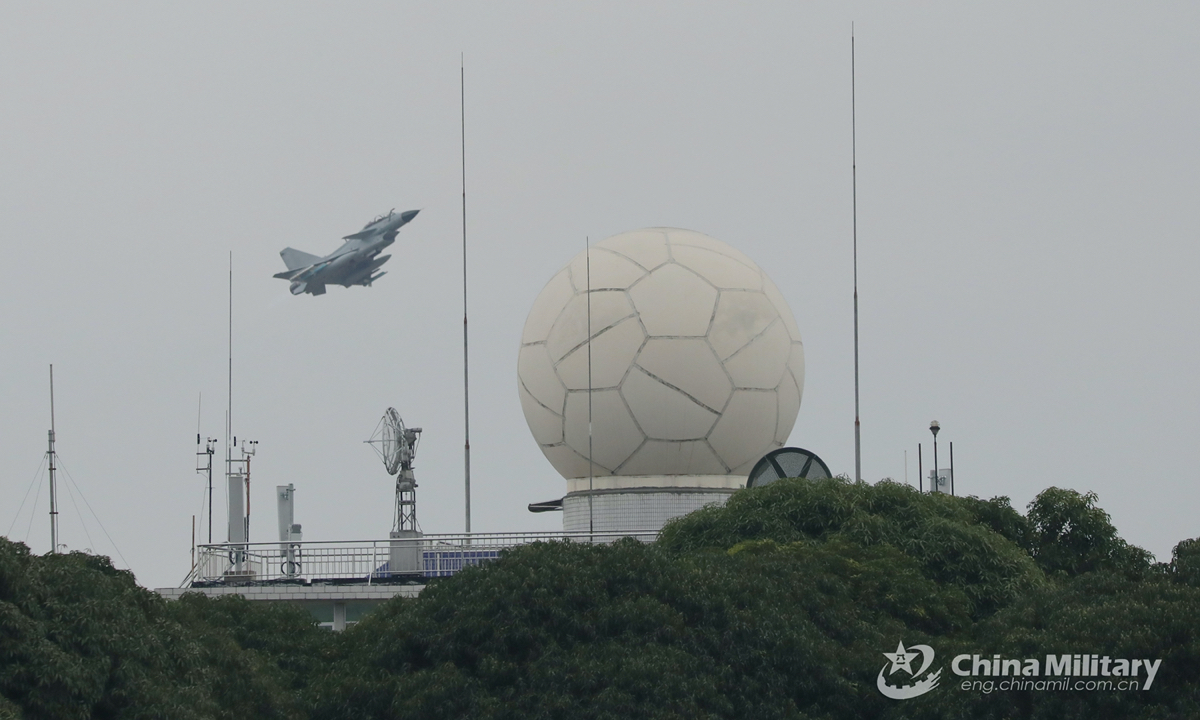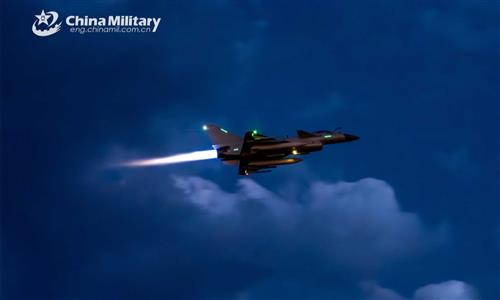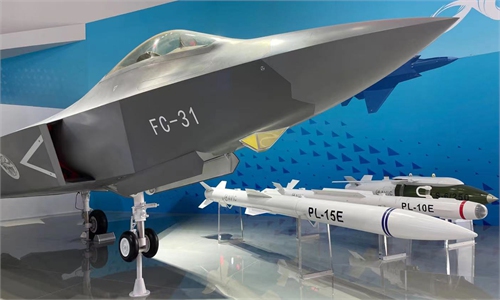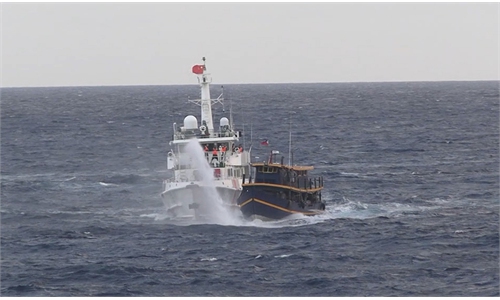Increasing US close-in drone recons on China ‘add complexity in military interactions’

A fighter jet attached to an aviation brigade of the air force under the PLA Southern Theater Command soars up into the sky during an air combat flight training exercise on January 17, 2022. (eng.chinamil.com.cn/Photo by Wu Gaoming)
Experts on Sunday said that while the Chinese military is prepared to counter the US' close-in drone reconnaissance attempts on China, the country is ready to establish a set of rules with the international community governing maritime and aerial interactions with drones, after a think tank report suggested that the US is increasing deployment of drones in such missions that will lead to more complexities in the two militaries' maritime and aerial interactions, as well as crisis management and control.
The MQ-4C unmanned aerial vehicle has gradually become the main force in the US Navy's close-in reconnaissance missions in the Asia-Pacific region, replacing the manned EP-3E electronic reconnaissance aircraft, the South China Sea Strategic Situation Probing Initiative (SCSPI), a Beijing-based think tank, said on Friday in a report.
After a first deployment in Guam in early 2020 for two years of missions in the Asia-Pacific, MQ-4Cs were again deployed in Guam in September 2023, and the scope of their activities indicated that these drones have assumed the roles of EP-3Es at least in the East China Sea, the Taiwan Straits and the South China Sea, the SCSPI said.
Since the start of 2024, MQ-4Cs continued to maintain high frequencies of operations, while no activities of EP-3Es were observed in these regions, according to the think tank's monitoring.
The SCSPI pointed out that the reconnaissance capabilities and efficiencies of the MQ-4C, including long endurance, all-weather and all-dimensional performances, are far superior to those of the EP-3E, not to mention that the operators of the drone can control the drones from as far as Guam, Hawaii or even the US mainland, where time differences will easily allow the drones to operate at nighttime in the Asia-Pacific region.
Drones have advantages in close-in reconnaissance because they have longer endurance, can cover a wider region, incur lower costs and are stealthier than a manned aircraft, so they can spy on regions 24 hours non-stop, Song Zhongping, a Chinese military expert and TV commentator, told the Global Times on Sunday.
Since such close-in reconnaissance operations pose serious national security threats, China will have to respond, including by hiding military activities from the US drones, conducting jamming, disrupting the control of the US drones or even shooting them down should they violate Chinese airspace, Song said.
Another Chinese military expert who requested anonymity told the Global Times on Sunday that the US could take advantage of the unmanned nature of drones to make more provocations since there is no risk of casualties.
On the other hand, pilots who are tasked to identify, monitor and potentially intercept the drones will face higher risks if the drones make dangerous maneuvers, the expert said.
Sending manned aircraft is also less efficient because of higher human resources and aircraft operational costs, the expert said.
The SCSPI also cited the risks of accidents, saying that regular activities by large US drones in hot regions will add complexity in maritime and aerial interaction as well as crisis management and control between China and the US.
In the three-day Western Pacific Naval Symposium (WPNS) Workshop 2024 hosted by the Chinese Navy that wrapped up in Nanjing, East China's Jiangsu Province on Thursday, the Chinese Navy raised the topic of the establishment of a research working group on unmanned systems, in addition to discussing the revision of the WPNS Business Charter and the use of the Code for Unplanned Encounters at Sea, the Xinhua News Agency reported on Thursday.
Experts said that a set of rules must be established for drones so they do not violate codes of maritime and aerial interactions, and international cooperation in this aspect is important.




